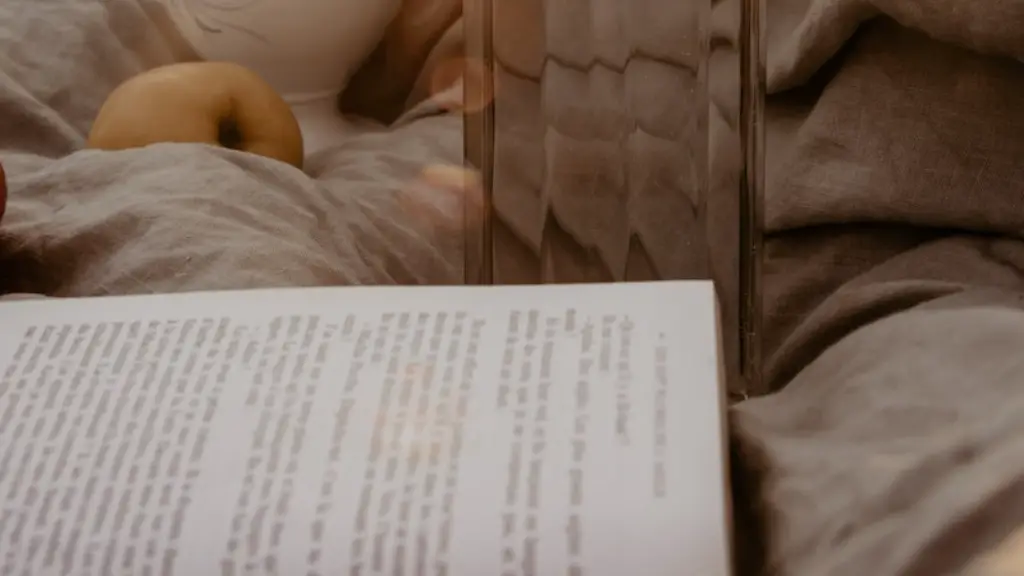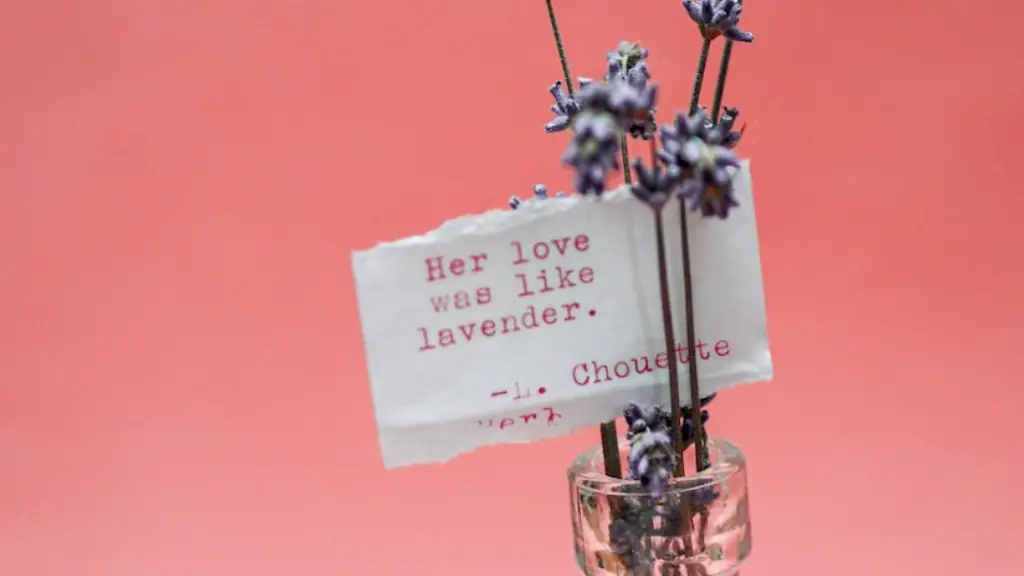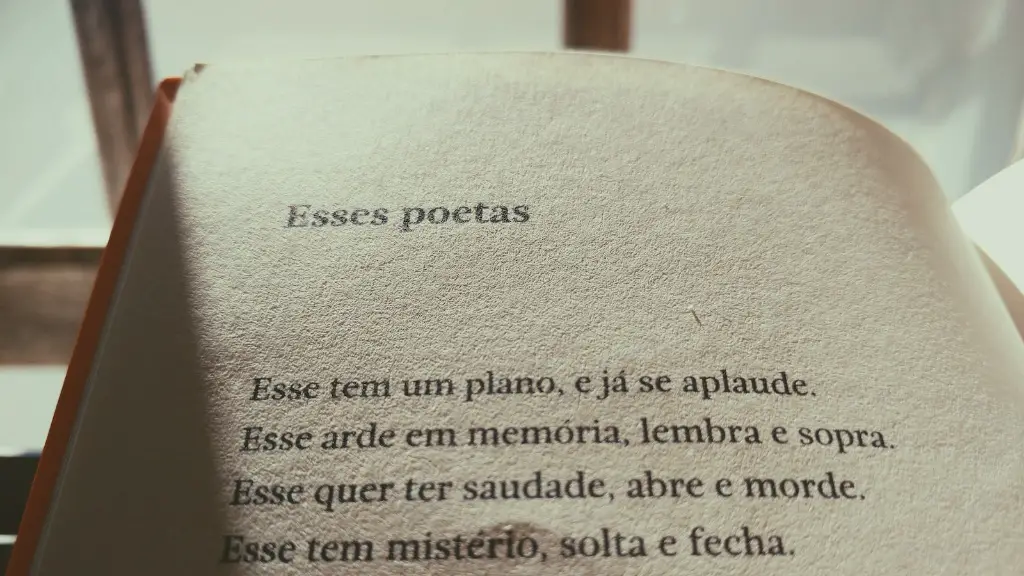Definition of Poetry
Poetry is a form of creative writing which uses language in an aesthetic and rhythmic way. Through its creative use of sound, imagery and figurative language, poetry allows writers to express themselves in a unique and powerful way. Poetry has been around for centuries and can be found in many different cultures and languages.
Styles of Poetry
There are three main styles of poetry: narrative, lyrical, and dramatic. Narrative poetry tells stories through verse, often in a lengthy and complex structure. Lyrical poetry expresses the personal thoughts and feelings of the poet, and is often written in the first person. Dramatic poetry is written in the form of a play and uses dialogue between characters.
Narrative Poetry
Narrative poetry is one of the oldest forms of poetry, and has been around for centuries. The most famous example of narrative poetry is Homer’s Odyssey, which tells the story of Odysseus, a Greek hero. In narrative poetry, the plot and characters are the focus of the poem, and it often has a clear beginning, middle, and end.
Narrative poetry is often divided into small stanzas, which are like mini-stories within the poem itself. This enables the poet to provide an overview of the plot, while allowing them to focus on a specific moment in the story, such as a character’s inner thoughts or a point of conflict.
Lyrical Poetry
Lyrical poetry is a form of poetry which focuses on the poet’s own thoughts and feelings about a subject. Lyrical poetry often uses imagery and figurative language to express the poet’s emotions and ideas. Many of the most famous poems from the Romantic period of literature, such as Wordsworth’s ‘Daffodils’ and Keats’ ‘Ode to a Nightingale’, are examples of lyrical poetry.
Lyrical poetry is structured in a way which allows the poet to express their feelings in a creative way. The poem’s language is often chosen for its emotive qualities and its ability to evoke an emotional response from the reader.
Dramatic Poetry
Dramatic poetry is a form of poetry which tells a story through dialogue and action. It has a strong theatrical element, as it is written in the form of a play, with multiple characters and a clear beginning, middle, and end. Dramatic poetry can be used to explore complex themes and emotions, as the writer is able to play with the structure and characters of the poem to evoke a response from the audience. Fam
Dramatic poetry also allows the poet to explore different viewpoints on a subject matter and to engage with different characters. The imaginative nature of dramatic poetry is what makes it so appealing to both readers and audiences alike.
Historical Influence
The three styles of poetry have all been heavily influenced by both the literature and languages of the past. Many aspects of the modern poem can be traced back to Ancient Greece, for example, where poetry was strongly linked to philosophy and spirituality.
The poetry of Ancient Greece found its way into the literature of the Roman Empire and later, into the work of Medieval writers. These poets used the creative language of the past to express their own thoughts and feelings. This tradition continued with the Romantic poets of the 18th Century, who used the unique language of poetry to explore their own emotional experiences.
Impact of Poetry
Poetry has a long and rich history and has had a profound impact on literature and language. Poets use their unique style of writing to explore complex themes, emotions, and ideas. It allows them to tell stories, express their own thoughts and feelings, and engage with their audience in a unique and powerful way.
The three styles of poetry are often used in tandem, allowing poets to explore different aspects of their subject matter and to create a more vivid narrative. In doing so, they craft a uniquely creative and emotive experience for the reader.
Analyzing Poetry
Analyzing a poem is an important part of understanding its meaning and messages. When analyzing a poem it’s important to look at the language and structure of the poem, as well as any imagery and figurative language used. Analyzing a poem allows readers to gain insight into the poet’s thoughts and feelings, as well as understanding of the material and concepts that the poet is presenting.
When analyzing a poem, it is also important to consider its context and any themes or motifs that may be present. Looking at the historical or cultural context of a poem can help to understand its meaning, as well as the cultural attitudes and values which are portrayed by the poet.
Writing Poetry
Writing poetry is as much an art as it is a skill. Aspiring poets should aim to create something that is unique and captivating, while being aware of the technical aspects of poetry such as meter, rhyme, and imagery. Poetry should be emotionally compelling, making use of figurative language and sound to evoke a response from the reader.
Writing poetry should also be a creative process, with the poet exploring their own thoughts and feelings, and writing from their own experiences and perspective. Writing poetry is a great way to explore creative ideas and concepts, and to express yourself in a unique and powerful way.
Modern Use of Poetry
The modern use of poetry includes both traditional and contemporary forms. Traditional poetry is still a popular form of literature, in both educational and literary contexts. On the other hand, modern poets are experimenting with new forms, such as spoken word and rap, which are becoming increasingly popular.
The internet has also enabled poets to reach a much larger audience, with many poets writing and sharing their work online. The internet has allowed poets to create and distribute their work quickly and cost effectively, and to engage with a global audience.
Conclusion
The three main types of poetry – narrative, lyrical, and dramatic – have evolved throughout history and continue to be a popular form of creative expression today. Poetry allows writers to tell stories, express their own thoughts and feelings, and engage with their audience in a unique and powerful way. Modern poets are now experimenting with new forms and audiences, and the internet has enabled them to create and share their work easily and cost effectively. For those looking to explore the beauty and creativity of poetry, the three main styles are a great starting point.


